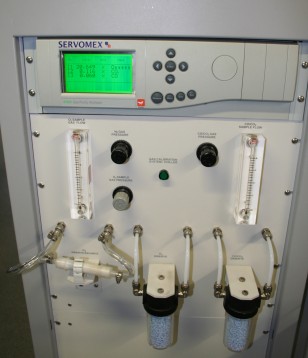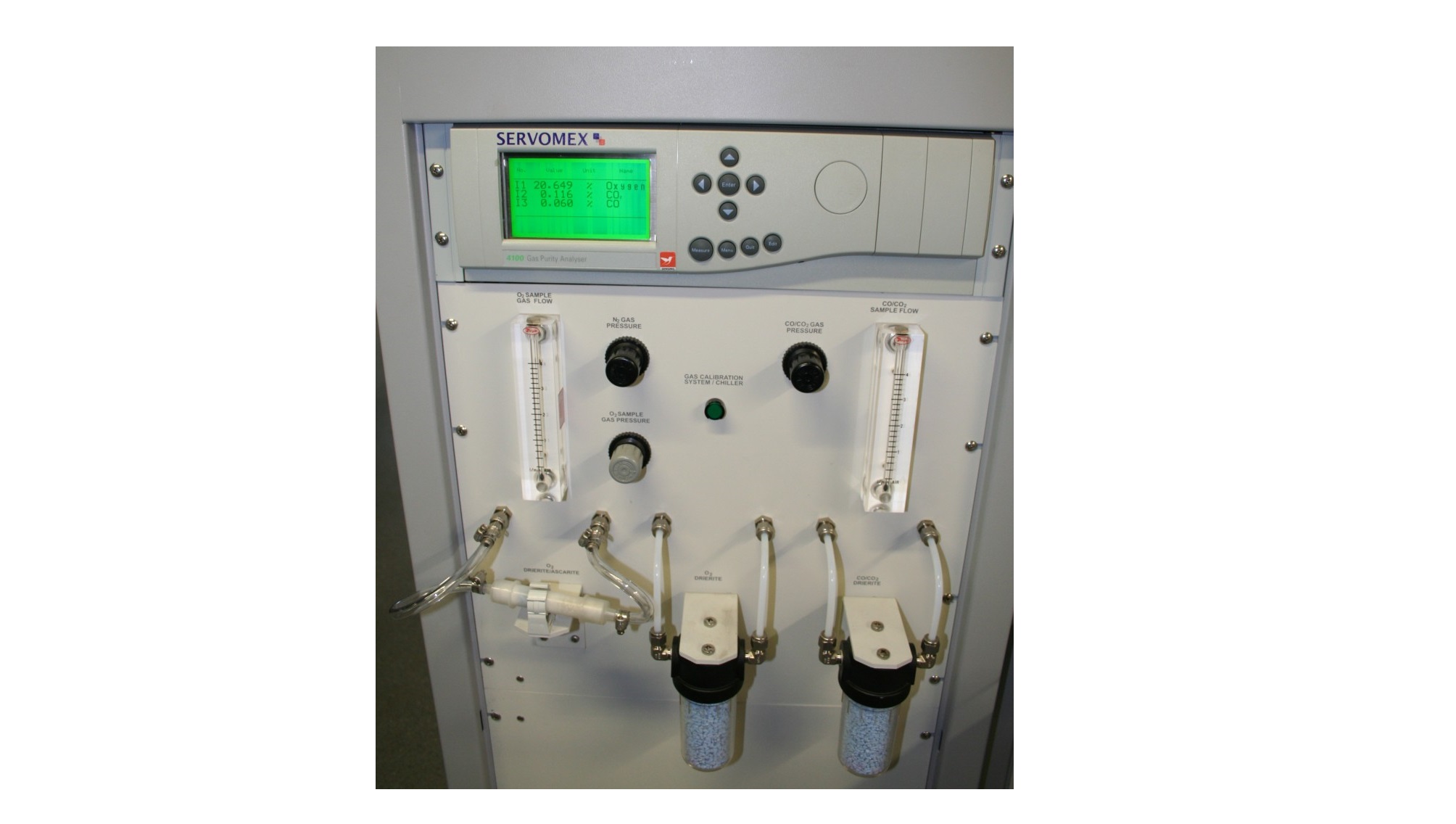ISO 9705, IMO FTPC PART 10
Large Scale and Small Scale Oxygen Depletion Calorimeters use the same Analyzers and gas sampling apparatus for the quantitative analysis of Oxygen and CO/CO2 measurements. The Calorimeter RIG houses the Oxygen Depletion Calorimetry Analyzers and gas sampling apparatus including high capacity pumps and filtration in a separate housing that can be easily detached from the A. By this Dual Analysis Calorimeter feature, the Analyzer housing can then be used for both the Cone Calorimeter (ISO 5660) and Large Calorimeter (ISO 9705).
For Large Scale testing, the Analyzer housing is de-coupled from the Cone apparatus and easily moved on the fitted casters to the new location of the Large Scale Calorimeter where it is coupled to power and sampling lines of the Large Calorimeter.
The RIG measures: –
Rate of heat release (kW/m2)
Effective heat of combustion (MJ/kg)
Time to ignition
Smoke density
CO production
CO2 production

Specification & Features
HEAT RELEASE CALIBRATION
- Calibration burner for burning pure methane to calibrate heat release measurement (determine C-factor)
- Calibrated Mass flow controller used to control gas flow
- Control and calibration procedure computerized
- Computerized automatic adjustment of gas flow to user set energy level.
GAS SAMPLING AND ANALYSIS SYSTEM
- Gas sampling ring and gas sample lines constructed of stainless steel or Teflon
- Soot Filters
- Sorbants
- Flow controls
- Sample pump
- Cold trap for removing excess moisture
- High Quality Gas Analyzer:
O2 ANALYZER
- Paramagnetic
- 0 – 25 % O2 range
- Pressure compensated
- Controlled temperature
- Less than 100 ppm noise and drift (per standard)
- Computerized calibration and scaling
Optional Gas Analyzers:
CO2 ANALYZER
- NDIR type
- 0 – 10 % CO2 range
- Computerized calibration and scaling
CO ANALYZER
- NDIR type
- 0 – 1 % CO range
- Computerized calibration and scaling
Technical Data & Requirements
SOFTWARE
- The instrument is calibrated using unique and proprietary Autocalibration techniques eliminating dependence on the operator to make tedious and precise tuning adjustments of the analytical devices.
- The software is Microsoft (MS) Windows compatible.
- The user interface uses the standard Microsoft user interface logic and styling for ease of use and familiarity to simplify calibration and test operations.
- User-friendly pull down menus and tabs show status of the instrument, calibration and test progress.
- Fast data acquisition scanning – Collection and recording of test data a minimum rate of 4 scans per second (250 milliseconds per scan); e.g. 100 second test contains 400 test data scans.
- Real time display shows continuous instrument status
- A minimum of 6 analog input channels are made available to the User to store custom scaled data channels or events in the test file in addition to the channels required for the standard operation and test data gathering.
- Real time test data displayed during test
- Real time test data is collected and stored for analysis in Microsoft Excel.
- Standard calculations are accomplished using MS Visual Basic for Applications (VBA) macros preprogrammed in Microsoft Excel to present results as formatted reports and graphs.
- Macros creating reports and graphs to the ASTM 1354 and ISO 5660 Parts 1 and 2 are included with the software.
- The user, using Microsoft Excel’s macro editor and/or MS VBA editor may easily customize the preprogrammed formatted reports creating:
- Non-standard calculations of the data
- Specialized or custom reports
- Specialized or custom graphs.
- Test Data may be transferred to any database and SPC programs capable of accepting MS Excel file data.
DATA ACQUISITION HARDWARE – (minimum)
- Data acquisition interface with and isolated digital inputs, isolated digital outputs, analog input/output channels, 16-bit analog input channel resolution, 16-bit analog output channel resolution
- Fast data acquisition scanning – Collection and recording of test data a minimum rate of 4 scans per second (250 milliseconds per scan); e.g. 100 second test contains 400 test data scans.
- Intel Pentium 4 processor, 2.20 GHz system clock speed
- 256 MB DDR SDRAM at 266 MHz
- Quiet keyboard
- 15 inch Flat Panel Color Display
- 80 GB 7200 RPM Hard Drive
- 48X CD-ROM Drive
- 2-button Scroll Mouse
- Integrated 10/100 Ethernet
- 56K Data/FAX modem
- Microsoft WINDOWS 7 Professional Operating System

